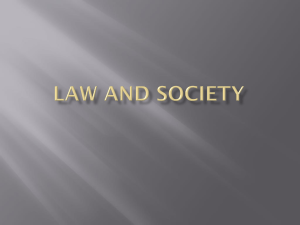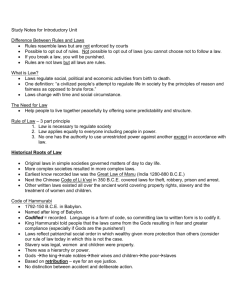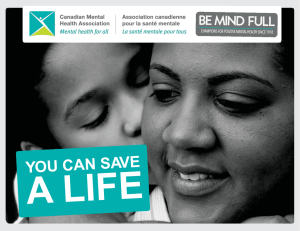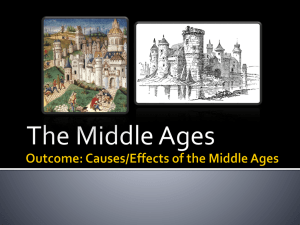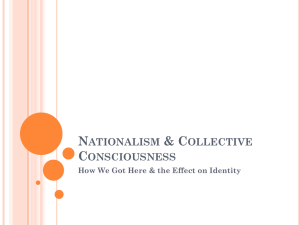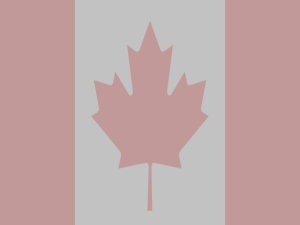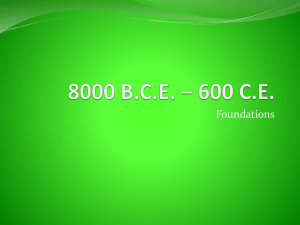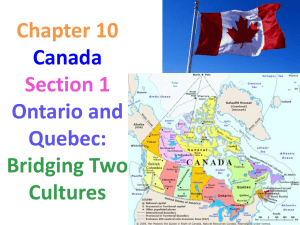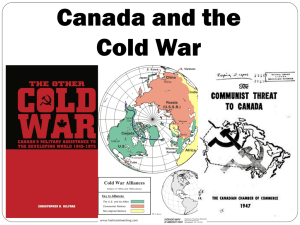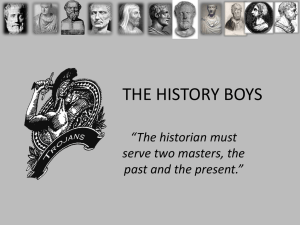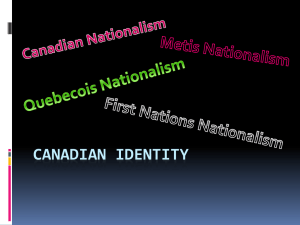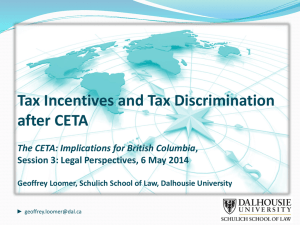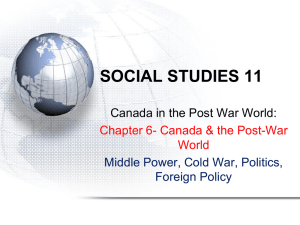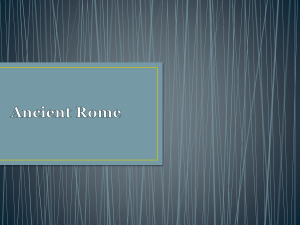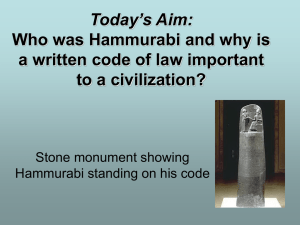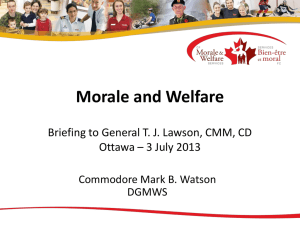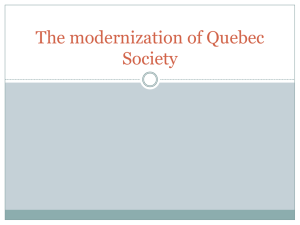Unit One: - HGunnWikiMHS
advertisement
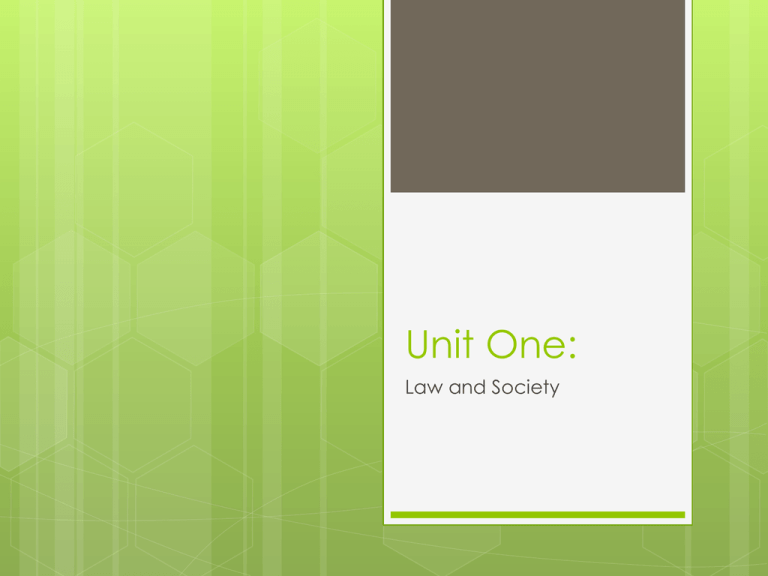
Unit One: Law and Society The Dumbest Things Ever Said in Court The following were posed by real-live lawyers and taken from court records (and borrowed from Duhaime.org). “Was that the same nose you broke as a child?” “Was it you or your brother that was killed in the war?” “Where you alone or by yourself?” “So, you were gone until you returned?” Lawyer, “What happened then?” Client, “He told me, “I have to kill you because you can identify me” Lawyer, “And did he kill you?” Law in Our Lives With a partner, discuss the meaning of the following quotes. Now, choose the one that you feel best fits with your personal philosophy, and be prepared to explain your rationale. 1. 2. 3. 4. 5. “Where law ends, tyranny begins” William Pitt (British PM 1759-1806) “Law is simply the rule of the stronger.” Plato (Greek philosopher) “Law depends on its validity by having a penalty attached.” Jane Austen (British author, 1775-1817) “Law is the highest reason.” Marcus Cicero (Roman orator, 106-43 BC) “The more numerous the laws, the more corrupt the state.” Cornelius Tacitus, Roman advocate at law, 56-120 CE). Law is Everywhere List all the laws that you think might apply to these situations. Canadian Laws Canada’s legal system strives to represent principles Canadians believe in and value. Each generation influences this system and the laws that are passed reflect the society of the period. When Was This Law Formed? 1. 2. 3. 4. 5. 6. National divorce law Prison rehabilitation laws Canadian Charter of Rights and Freedoms Same-Sex Marriage NB ATV Law (Kids under 14 need to be supervised; kids under 16 need course) No smoking in public places in Canada Answers 1. 2. 3. 4. 5. 6. 1960s and 70s 1960s and 70s 1982 (Charter) 2005 (Same-Sex) 2011 (ATV) 2008 (No Smoking) Why Study Law? To ensure the legal system continues to work Thoughtful, informed citizens Capable of affecting meaningful change Have insight and tools to influence change to reflect your generation Be a better citizen Rules vs. Laws What’s the difference between a law and a rule? Consequences are not enforced by the courts, with rules. As a member of society, you can’t opt out of following a law, and you can’t change them on your own. If you break a law, you will be punished: going to prison, paying a fine, paying compensation for damages. Which is a Law and Which is a Rule? Not smoking on school property. Wearing your seat belt in your car. Not buying cigarettes under the age of 19. Not wearing your hat in class. Turning off your cell at the movie theatre. Not hunting deer without a licence. Participating in a “Pyramid Scheme” What is a Law? Laws regulate our social, political and economic activities from birth to death. They restrict who we can marry, who gets our money when we die, whether we can put a swimming pool in our backyard, at what age we can purchase certain products, what ingredients should be in our soft drinks. Laws differ from nation to nation, province to province, and even city to city. For example, in come Canadian cities, you can make a right-hand turn when the traffic light is red. The same practice is illegal in other cities. Really? According to the Driver’s Handbook, you can make the right-hand turn, unless there is a sign telling you not to. It’s illegal in Montreal, Japan and Denmark, for example. Can you find other examples? Laws Change with time and Location Laws passed today might be quite different from laws passed in 1867 (think women’s rights and equal opportunity). Laws about snow removal in NB would not be necessary in Victoria, BC. Laws reflect values as well as practical concerns, so they vary widely among provinces, states, countries and cultures. Civil Law and Common Law Canada is somewhat unique because it inherited Civil Law from the French and Common Law from the English. Today Common law is applied in most countries settled or ruled by the British. In Canada, law in all the provinces except Quebec is based on common law. According to British tradition, it has been the responsibility of Parliament to protect individual rights. This practice was followed in Canada until the passing of the Constitution Act, 1982, which set down individual rights along American lines in the Canadian Charter of Rights and Freedoms. Canadian Charter of Rights and Freedoms (1982) Normally courts are required to apply legislation as passed. However, the Canadian Charter of Rights and Freedoms, part of the Constitution Act, 1982, has given courts the responsibility of ensuring that legislation does not violate the individual rights. British Common Law British common law, also called traditional law, is law that has evolved from decisions of English courts going back to the Norman Conquest in 1066. These earlier decisions set “precedent,” which are used in future cases of a similar nature. Precedent can be overruled by new laws, or statutes, passed by the appropriate government. Common Law in Canada Before 1867 Newfoundland, Prince Edward Island, New Brunswick and Nova Scotia all followed common law before Confederation. The province of Canada, however, had begun as a French colony – New France – which used civil law. After the conquest, the British guaranteed the survival of civil law in the Quebec Act, 1774. The Constitutional Act, 1791, however, split the province of Quebec into Upper (now Ontario) and Lower Canada (now Quebec). Lower Canada retained civil law; Upper Canada quickly switched to common law. Civil Law Civil law is the kind of law that evolved from Roman law, based on a written “civil code”. This was adopted in France after the French Revolution in 1789. Called the Code Napoléon, it covered only matters of private law: • The legal attributes of a person (e.g.: name, age of majority) • The relationship between individuals (e.g.: marriage, adoption, parentage) • Property (e.g.: possession, land boundaries) • The legal institutions governing or administering these relationships (e.g.: wills, sales, leases, partnerships) Civil Law Through plain language and the specific nature of each regulation, civil codes are intended to be easy to understand and apply. It does not rely on precedent to the same extent as common law. Today, civil law is used in many countries in Europe as well as in Quebec. The Civil Code of Lower Canada remained unchanged until 1955, when changes began to be made. By the late 1980s, it was realized that a major revision was required. A new Civil Code of Quebec came into force on February 1, 1994. This new code integrates some concepts from common law. It is still under debate as some of its regulations fall under the sphere of the federal government as determined by the British North America Act, 1867 (now renamed Constitution Act, 1867) and Constitution Act, 1982. Laws Change With The Times: Laws in NB in the 19th Century Husband and wife were one legal entity. A woman could not sue her husband if he abused her because that would be, in legal terms, suing himself. He alone had the right to determine the fate of their children, and, upon marriage, his wife’s assets and subsequent earnings were under his control. When her husband died, a woman was entitled, under the law of dower, to a life interest in onethird of her husband’s estate. Often a widow became a boarder in her own home which passed into the hands of one of her sons. (http://atlanticportal.hil.unb.ca/acva/loyalistwom en/en/context/world.html) Old Maid In colonial society, single women theoretically had legal status equal to that of men, but they rarely exercised it. Even those few women who had the requisite property qualifications were denied the right to vote and to hold public office. Referred to as ‘spinsters’ or ‘old maids,’ unmarried women who failed to make the transition from a young maid to housewife were often the object of scorn. (http://atlanticportal.hil.unb.ca/acva/loyalist women/en/context/world.html) Slaves in NB’s History Enslaved African Americans who lived in Loyalist New Brunswick were, by law, subject to the dictates of their owners, who sold them at will. Slaves rarely had the opportunity to form stable families. Slave masters believed that they had the right to sexual relations with their “chattel” Known primarily by their first names, slaves had few legal rights and were often treated brutally by their owners. The life expectancy of slaves was short, due in part to the hard work they were forced to do and an inadequate diet. (http://atlanticportal.hil.unb.ca/acva/loyalistwom en/en/context/world.html) Punishment: Hanging Much of the legal system was dedicated to protecting private property, hence the often severe penalties for crimes such as robbery, burglary and counterfeiting. Research on the subject is limited, but based on practices in other British North American colonies, guilty individuals could be hanged for property offences The last hanging in Canada was in 1962. (http://www.unbsj.ca/arts/hist/) Branding, Whipping, Stocks Other punishments included branding felons and whipping persons who had committed minor offences, or subjecting them to humiliating punishments such as the public stocks. In the aftermath of rioting among loggers and raftsmen along the Miramichi river in 1822, for example, a number of prisoners received fifty lashes or were placed in the pillory. During the second third of the century, corporal and humiliation punishments were replaced by fines and imprisonment. This was a period in which servants and children were whipped by masters and parents, and when residents of county or municipal Poor Houses also were subjected to corporal punishment. (http://www.unbsj.ca/arts/hist/) Juvenile Delinquents, 1908 In 1908, the Canadian Parliament enacted the Juvenile Delinquents Act, which placed children and youth ’in conflict with the law’ under a new legal status: juvenile delinquency. Youth were to be excluded from adult lockups, courts and jails as much as possible, but could be prosecuted, fined, placed on probation or even sentenced to a reformatory for being disobedient to parents or guardians. Cases From NB Read the case that is assigned and summarize (who, what, when, where, why and how). It what ways does this case differ from the law, as you know it, in 21st Century NB? The Need For Law To some extent, laws permit us to do that by giving us a certain amount of predictability and a structure for creating a safe and peaceful society. Laws against criminal conduct safeguard our property and protect us from violence. Disputes and disagreements are settled in the courts, not in the streets. Some societies enforce law through intimidation, and citizens can be arrested and imprisoned without trial. In Canada, we expect law to protect the rights of individual citizens. The Rule of Law A 1. 2. 3. three-part principle of justice Individuals must recognize and accept that the law is necessary The law applies equally to everyone, including people in power No one has the authority to exercise unrestricted power to take away our rights except in accordance with the law. Roncarelli v. Duplessis Read the case study and answer the two questions Page 13 Law and Morality Some laws reflect the moral values of the majority of society. The relationship between laws and moral codes can be controversial. Ex: Should it be against the law to help a loved one die when he or she is suffering from a terminal illness? It is in Canada. Ex: Should abortion be a criminal or medical matter? Ex: Is it acceptable for parents to physically discipline their children? Ex: Why does society regulate tobacco and alcohol but consider other drug use criminal? Canada’s Marijuana Laws http://www.cannabisculture.com/v2/cont ent/2011/04/13/Ontario-Judge-RulesCanadas-Marijuana-LawsUnconstitutional Videos Right and Wrong: Says Who? In a multicultural, democratic society, tension may exist between the law and personal and community standards of right and wrong. Although Canadians have always been divided in their support for capital punishment, in 1976 the gov’t abolished the death penalty. Sometimes the democratic will of the people challenges Parliament to change laws to represent the moral values of society. For example, society has become less tolerant of people who drink and drive, resulting in increasing penalties and a wider range of charges. In NB, the legal limit just dropped from .08 to .05 as of May, 2011. http://www.cbc.ca/news/canada/newbrunswick/story/2011/05/27/nb-drunk-driving-lawstrevors-926.html Law and Justice The idea of law has always been associated with the idea of justice. What exactly is justice? What do we mean when we say we want to live in a “just” society? Discuss with your group and see if you can come to a consensus, to share with the larger group. 3 mins Law and Justice The concept of justice has varied from age to age. Ancient Greece society did not consider inequality an injustice; it was just the way society was structured. Today, Canadians would place equality at the very heart of justice. The law is supposed to be applied equally to all, regardless of financial status, age, gender or race. All kids should have the right to education, all citizens have the right to vote. R. v. Dudley and Stevens Read the case study on page 15. Answer questions 1 and 2. Discuss your answers Justice Because our ideas of justice originate from our moral convictions and our values, attitudes and beliefs, all change over time. We do have to agree on certain characteristics. 1. We should “treat like cases alike and different cases differently.” (A charge of disturbing the peace would be handled differently if the accused has Tourette’s Syndrome. Is that fair? Just?) 2. 3. 4. We consider a law unjust if it discriminates on the basis of irrelevant characteristics. You might be ok with being refused entrance to a restricted movie if you didn’t have proof of age, but if you were denied based on the color of your eyes, you would likely not be ok with that. Justice should be impartial; laws should be applied regardless of a person’s position or financial status. We expect the law to be just in that it conforms to society’s values and beliefs. For example, if the federal gov’t wanted to strengthen law enforcement by requiring all Canadians to have a sample of their DNA take at birth, some people might oppose because it’s a violation of their right to privacy. Whether or not the legislation got passed would depend on society valued protection over privacy. Is there justice for the rich and famous? Brainstorm some examples of when celebrities / people in power / with money have been grabbed by the long arm of the law. Brainstorm some examples of when privilege and power seem to helped individuals get away with murder (or something else). Examples Italian Prime Minister Silvio Berlusconi Brian Tobin’s son, Jack Conrad Black Martha Stewart Michael Jackson Paris Hilton OJ Simpson Ted Kennedy “MacIsaac Discharged for Fiddling with Pot” Read the case study (page 16) Answer the two questions Discuss Do you know your stuff? 1. 2. 3. 4. 5. 6. Why do you think it’s important to study the laws of your country? How do rules differ from laws? Why do we need laws in society? Identify the three aspects of Rule of Law. What is the relationship between law and morality in Canadian society? Use your own examples to explain each of the four agreed-upon characteristics of justice. Part Two: Historical Roots Laws in the form of community-enforced rules have existed from the time people started to interact. Early communities created laws related to hunting, ownership of property, family relationships, and responsibilities. Most were based on common sense or practicality and were passed on by word of mouth to future generations. As people started to trade with other nations, laws became more complex and it was necessary to put them in writing. Great Laws of Manu Between 1280 and 880 BC, lawmakers in India recorded the Great Laws of Manu: compiled laws passed on for generations, in oral tradition. China also had a set of written laws – The Chinese Code of Lik’vei, written around 350 BC (theft, robbery, prison, arrest). Laws around the world have much in common: property rights, slavery, treatment of women and children (similar despite great distances). Many of these have affected Canada’s present legal system. The Code of Hammurabi (ham ar ah bi) One of the earliest sets of written laws were discovered in Iran by French archaeologists in 1901. Hammurabi (1792-1750 BCE) was the king of Babylon. He codified the rules and penalties for every aspect of Babylonian life. He attributed the laws to the gods, to get compliance. Some tidbits Commit a robbery? Be put to death. Open your ditches to water your crops and flood a neighbour? Pay for it. If your wife gets sick and you want to marry someone else? Keep the first one in the house and support her (and marry the second one). Want to hire your daughter out to work or sell her as a concubine or to serve a god (in a nunnerylike situation)? Go for it. Commit adultery? Both parties are put to death by drowning. Hit your father? Lose a hand. Is that fair? This was a patriarchal society in which the wealthy were given more protection in law than the poor. Slavery was legal, women and children were considered the property of men. There was a clear hierarchy of power: gods at the top, king, male nobles, their wives and children, poor and slaves at the bottom. Many of the laws were based on retribution (and eye-for-aneye) and distinction was not made between an accident and a deliberate action. For example, if a doctor operates on a patient and the patient dies, so does the doctor. Because of the hierarchy of power, those who were powerful often had their slaves or female relatives accept retribution. Some penalties seem excessive and cruel: if a slave says to his master, “you are not my master”, he cuts off his ear. Reasonable and Just Restitution: the concept of making payment to the victim of the crime was common in the event of damage or theft. It was recognized that people should not lie, especially at a trial. The strong should protect the weak (if someone has their cattle stolen and the thief is not fond, the community will compensate him). So, in some ways, even these earliest laws have influenced our current system. Mosaic Law One of the greatest influences on our law is biblical law, also known as Hebrew law or Mosaic Law. In the bible, we are told that Moses climbed Mt. Sinai where God gave him laws to be followed: The Ten Commandments. These laws and other Mosaic Laws were written 500 years after the death of Hammurabi, and the principles are similar. Mosaic Law Forbidden to commit murder, adultery, theft and to worship other gods. This is an example of how laws evolve. Mosaic Law was more concerned with punishing a deliberate action than an accidental act of harm. It was also more likely to punish the guilty party than permit a person of high status to shift punishment. Care for the poor was a great concern in Mosaic Law. Laws from the Book of Exodus Thou shalt not kill Thou shalt not steal If a man steals an ox or a sheep and kills it or sells it, he shall restore five oxen for an ox and four sheep for a sheep If a thief is found breaking in and be smitten that he die, there shall be no blood shed for him Thou shalt not raise a false report, or put thine hand with the wicked to be an unrighteous witness. Based on this excerpt, what conclusions can you draw about the concept of justice in Hebrew society at this time? Comparison The Code of Hammurabi and The Ten Commandments both emphasized the importance of showing respect for parents. But they differed in how the laws were expressed: the Hammurabi code spoke of punishing a son for striking his father; Mosaic Law was less gender specific, “Whosoever strikes his father or his mother shall be put to death.” It’s possible that this reflects a different attitude toward women in the two societies. Greek Law The first form of democracy was born in Greece, though it wasn’t democracy as we know it today. Only “citizens” (a small percentage of the population) had political rights. Excluded were women, children, aliens and slaves. Greek Citizen Involvement Athenian citizens were expected to participate in major decisions affecting the running of the country. Voting was a major responsibility, so was jury duty. The jury system can be traced to Athens, in approximately 400 BCE. They used democracy to decide on the sentence of the accused; if the person were found guilty, the accused and the accuser would suggest a sentence. The jury voted. The Trial of Socrates One of the best-known examples of the democratic process was the trial of Socrates. He was arrested in 399 BCE. It was claimed that his ideas mislead Athenian youth and undermined democracy. After a lengthy trial, 501 jurors found him guilty (281 to 220) and the accusers recommended the death sentence. He argued that the law was unfair but accepted that he had been tried by his peers. He drank a cup of poisonous hemlock, as instructed by the court. Roman Law Two basic principals: 1) the law must be recorded and 2) justice could not be left in the hands of judges alone to interpret. They were codified, and could be revised when needed. The Twelve Tablets, among the earliest Roman codes, were written on wood and bronze in 450 BCE. Compiled by a committee of 10 men Determined the law of England during the Roman occupation and is the FOUNDATION OF MODERN LAW. Roman Law Public persecution of crimes System of victim compensation Protected the lower class from being abused by the upper class BUT, reflected a patriarchal society (women weren’t mentioned as they had no status) Their society had spread throughout Europe, as did their laws. New laws were made to decide matters such as what constituted criminal behaviour, how contracts should be regulated, how everyday disputes between citizens should be resolved. It became necessary to have expert oversee the system: lawyers Practice of having an advisor (lawyer) became prevalent Justinian’s Code After 395 BCE, the Roman Empire split into the Byzantine Empire and the Western Roman Empire. Byzantine Emperor Justinian commissioned 10 men to study and clarify the 1600 books of Roman law. Inspired the modern concept of justice “Justice” is derived from his name Formed the basis of civil law (laws governing personal relationships) Became one of the main legal systems to govern Western civilization (France and, thus, French Canada) France and the Napoleonic Code The French Revolution took place 1200 years after Justinian’s rule. Bonaparte gained firm power. In order to unify French law, he commissioned a new code of laws, Napoleonic Code, or the French Civil Code. Came in effect in 1804 and spread throughout much of Europe. These laws were a compromise between Justinian Law and Germanic law. It was non-technical and, so, accessible to the public. Regulated civil matters (property, wills, contracts, family law). See the excerpt on page 23. What do these laws tell you about the status of women in French society at the time? Do You Know Your Stuff? 1. 2. 3. 4. 5. 6. What were the Great Laws of Manu? Identify one of the earliest-known written codes. Name the set of laws found in the Book of Exodus in the Bible. What role did the people known as citizens play in Greek society? Which society had the first paid legal advisors? How did the Justinian and Napoleonic Codes contribute to the development of modern law? Influences on Canadian Law Canadian law reflects aspects of Mosaic, Greek, Roman and French law, but it’s British law that has had the most influence in Canada.. Picture of the Queen in the courtroom; judge, lawyers, parties involved sit in an area separate from members of the public; court judges and lawyers wear long, black robes; justices in the Supreme Court of Canada wear scarlet robes trimmed with ermine. All of these traditions come from Canada’s roots as a British colony. Early British Law When the Roman conquered Britain in 43 BC, they imposed their laws. This lasted until 410 CE. Local customs and traditions took over, as law. 1. TRIAL BY ORDEAL When a lord can’t decide a case, he uses a method called trial by ordeal. The accused undergoes a torture, and guilt or innocence is determined by the outcome. God is said to have decided. Dead? Guilty. (trial by hot iron, trial by hot water, trial by cold water). Purging by Water Read the case study on page 25 Answer the question Discuss Trial by Oath Helping Used for less serious charges. People who knew the accused had to swear an oath on the Bible that he or she was innocent. If they did, the accused went free. Trial by Combat The two parties engaged in a duel. It was presumed that God would be on the side of the innocent. (FYI, in Canada, to extend or accept a challenge to a fight or duel is a criminal offence that carries a penalty of imprisonment for up to two years) It was possible to hire someone to fight on your behalf, using your brain, but not your body. Sounds like our adversarial system; a lawyer argues on your behalf because she is better able. The Feudal System The arena for most legal battles today is the courtroom. Today we take for granted that “no one is above the law” and that the judge is impartial. Until 1066, there had been no unified system of law, but a combination of traditions from a lot of villages. In 1066, William the Conqueror (Normandy), invaded England, won and quickly instituted law by unifying the system and assuming overall authority. William was the Law Absolute power came from DIVINE RIGHT, the belief that the monarch derived power to rule from God and was “above the law” Feudal System was instituted, divided England into parcels of land, each controlled by a nobleman, and everything within it (land, animals, peasants) belonged to the lord. Each nobleman judged and sentenced only those under his direct authority. Some were fair, some were not. Penalties differed from village to village. No rules of evidence and no thought of the rights of the accused. By the 12th century, the people had rebelled and Henry 11 (William’s grandson) changed the course of history, and lead to the present-day system of British and Canadian law. Common Law Henry’s attempt to bring consistency and fairness Authorized a number of judges to travel and hold court, assizes Used common sense and principles of justice and local customs and traditions that reflected the community’s sense of justice. They started to record their cases and their decisions, so a common method developed. This was the basis of common law or case law. Precedents could be followed in future, similar cases STARE DECISIS, “to stand by the decision” developed into the RULE OF PRECEDENT used today. Legal Reforms Next, Henry set up a jury system. Used first in land disputes; 12 elderly men. They left the decision to the judge. Soon courts heard disputes about everything from inheritance to serious criminal offences. Inadvertently, this system lead to the monarch losing ultimate power. Rule of Law The MAGNA CARTA was the first step in establishing individual basic rights for people in England. It recognized the principle called THE RULE OF LAW, which gave everyone equality before the law. No one was above the law. Habeas Corpus “You must have the body”, the writ (legal body). A court order that commands the custodial authority to present an arrested person before a judge or court to determine the validity of the arrest. The purpose is to release those who are unlawfully imprisoned, within a reasonable amount of time. This is fundamental to our current legal system. Aboriginal Law Aboriginal people (in North America) had beliefs that acknowledged a creator in heaven and a strong sense of family and community. They had established governments, religions, social structures and legal systems. They were passed orally from generation from generation. The LEAGUE OF NATIONS or IROQUOR CONFEDERACY was formed in 1450, Mohawk, Onondaga, Seneca, Oneida, Cayuga and Iroquois (Six Nations). This influence was far reaching through North America. The GREAT BINDING LAW outlined the rights, duties and responsibilities of the people and had laws covering adoption, emigration, treason and secession. There are many similarities with our current concept of law / justice. On Clans and Consanguity Read the excerpt on page 29. What beliefs and values are revealed by these excerpts from THE GREAT BINDING LAW of the Iroquois Confederacy? Go to http://www.indigenouspeople.net/iroqcon.ht m Select one section of this document and discuss it with a partner Wrap it Up Our Canadian legal system has been influenced by earlier legal systems Mosaic Law is the root of three modern religions: Judaism, Christianity and Islam. Many modern concepts of law and justice come from Christian writers and philosophers. Many people have felt that the Church has a role in forming the moral framework for law and government Today, Western democracies attempt to separate Church and State. The Church certainly has played an important role in shaping the heritage, values and beliefs on which the law is based. Canadian juries are a modern version of Greek juries (accused has the right to be tried by an impartial jury of his peers). The Romans are responsible for establishing the role of lawyers and for contributing to the French Civil Code, which forms the basis of the Quebec Civil Code. The British legal system and its RULE of LAW and the rule of precedent influenced Canadian law greatly. Increasingly, we are recognizing Aboriginal interpretations of early land claims and treaty rights and also the sense of justice that emphasizes community involvement and habitation. What Do You Know? 1. 2. 3. 4. How was trial by oath helping similar to the jury system of Greek law? How was it different? Explain the meaning of “case law” and how it has evolved since the reign of Henry II. Define “rule of precedent”, using an example. Describe the importance of the Magna Carta for the people of Britain. Assignment One Use the information from the “Historical Roots” section and create a graphic organizer that shows the chronological order of each key area (dates), and the main points / key words / definitions and people for each. I suggest you use the SmartArt tool from Microsoft Powerpoint. Submit on paper. Test 1. What’s the difference between a law and a rule? 1. Explain why Canada is unique in having both common and civil law and briefly explain the difference. 2. The “Four Agreed Upon Characteristics of Justice.” 3. Know the basics for each of the following: The Code of Hammurabi, Mosaic Law, Greek Law (first form of democracy for “citizen”), Roman Law (code that is now considered the foundation for modern law, public persecution of crimes, system of victim compensation, protected the lower classes, advisor (first lawyers)), French Civil Code (Napoleonic Code): regulated civil matters, non-technical, spread through Europe (and French Canada), Britain’s Common Law (case law, stare decisis, rule of precedent, Rule of Law (Magna Carta), habeas corpus) and aboriginal law (The Great Binding Law).
